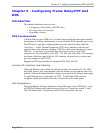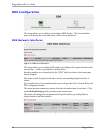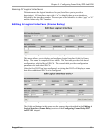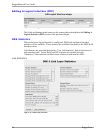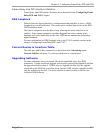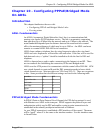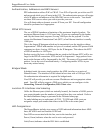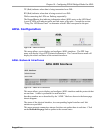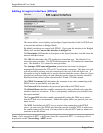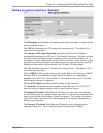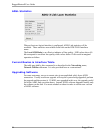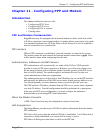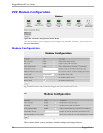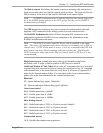
RuggedRouter® User Guide
Authentication, Addresses and DNS Servers
PPP authentication utilizes PAP or CHAP. Your ISP will provide you with a user-ID
and password which you will enter in the GUI. The authentication process will assign
a local IP address and addresses of the ISPs DNS servers to the router. You should
use these DNS servers unless you wish to provide your own.
You will obtain either a dynamic or static IP from your ISP. Firewall configuration
should be performed as is appropriate.
PPPoE MTU Issues
The use of PPPoE introduces a limitation of the maximum length of packets. The
maximum Ethernet frame is 1518 bytes long. 14 bytes are consumed by the header,
and 4 by the frame-check sequence, leaving 1500 bytes for the payload. For this
reason, the Maximum Transmission Unit (MTU) of an Ethernet interface is usually
1500 bytes.
This is the largest IP datagram which can be transmitted over the interface without
fragmentation. PPPoE adds another six bytes of overhead, and the PPP protocol field
consumes two bytes, leaving 1492 bytes for the IP datagram. This reduces the MTU
of PPPoE interfaces to 1492 bytes.
Packets received by hosts via Ethernet that are sized to the Ethernet MTU will be too
large for the PPPoE connections MTU and will be fragmented. Large packets from
hosts on the Internet will be fragmented by the ISP. The router will re-assemble these
packets, but at the cost of increased latency. Configuring smaller MTUs at your
hosts may reduce latency.
Bridged Mode
In bridged mode, the router simply employs the ADSL interface as a carrier of
Ethernet frames. The interface will be created at boot time with a 1500 byte MTU.
No authentication information is required for bridged mode.
Your ISP will provide you with one or more IP addresses and an appropriate subnet
mask. Your ISP will also suggest a DNS server which you can configure via the
Networking, Network Configuration, DNS Client menu.
Location Of Interfaces And Labeling
Unlike the Ethernet ports (which are statically located), the location of ADSL ports in
your router depends upon the number of ports and how they were ordered. Refer to
the labeled hardware image as presented in the Webmin home page.
To make labeling easy to understand, all T1E1, T3, DDS and ADSL ports are
assigned a unique port number that relates to the LEDs on the status panel.
LED Designations
The RuggedRouter includes two sources of LED indicated information about ADSL
lines, the ADSL card itself and the LED Panel.
Four LEDs are associated with the line, next to the interface jack.
Power (Green) indicates when the card is active and powered.
Link (Green) indicates when the DSL link is established.
90 RuggedCom




